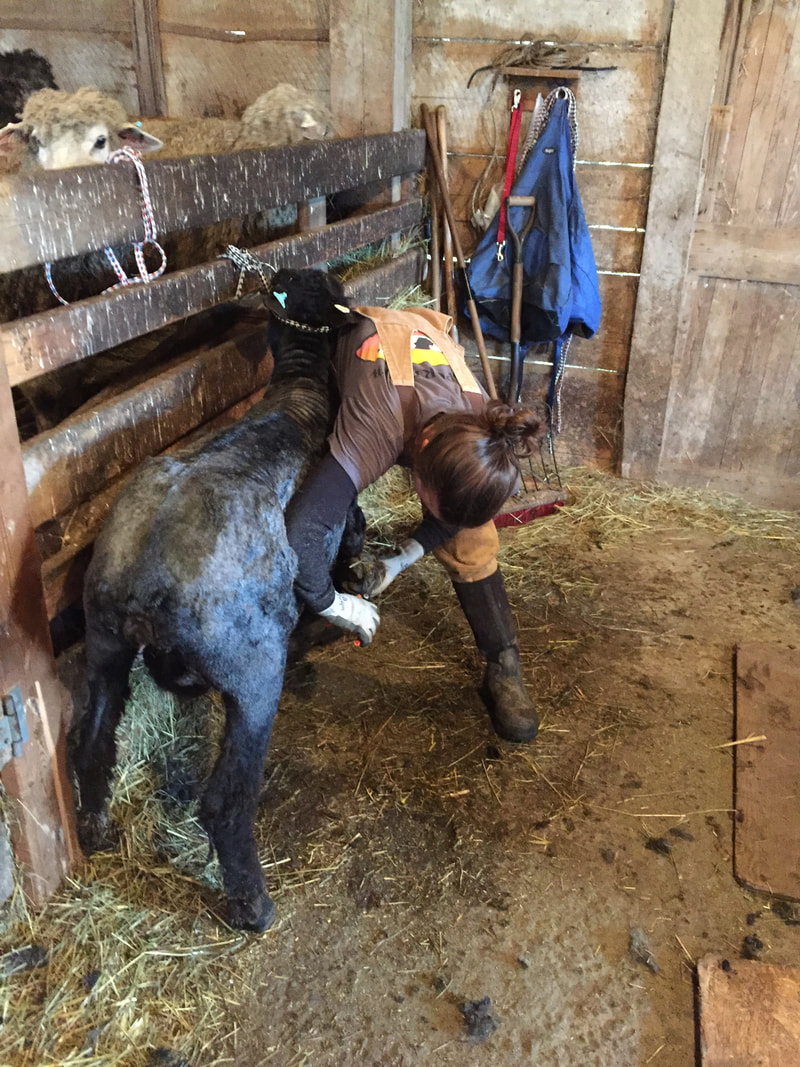|
There's a holiday that shepherds celebrate one to two times per year... shearing day! Raising a longwool breed of sheep means that shearing happens twice for us; spring (April/May) and fall (November). I've known my shearer, Colin, since our 4-H days and he comes out from Connecticut to help with the task.
The first thing we do is separate the sheep into groups. This spring, we only sheared the mature ewes who had lambs over the winter, and the rams. The lambs and yearlings won't be sheared until the fall, as I am striving for longer fleeces in my flock. Having everyone separated and penned up at the start helps the day run efficiently. Once we get started, it's an "assembly line" of shearing, packing wool, hoof trimming and deworming. I help corral/catch the sheep, Colin shears, and my friend Anna is the designated hoof trimmer. Sheep's hooves grow just like our fingernails and need to be regularly trimmed. After the sheep are sheared is a great opportunity to do this, along with giving them a dewormer as the pasture is just coming on strong. Meanwhile, I inspect each fleece both on and off the sheep and decide whether it should be kept, and what it should be used for (sold raw, processed, etc.). Shearing provides a great opportunity for the shepherd to inspect all the sheep and determine how they recovered from lambing, their udder health, hoof health, and overall condition. While I'm in the barn 1-2x/day throughout the year, I don't necessarily get up close and personal with every sheep like we do on shearing day. This spring, we sheared 25 sheep and it took us 4 hours. We might not be the fastest crew out there, but going a bit slower reduces our stress, which in turn is less stressful on the sheep. And we have a fun time doing it as well! We always start with donuts and coffee and end the day with pizza from our favorite pizza shop in town. I have a handful of winter fleeces available for purchase. Winter fleeces aren't the highest quality, as ewes use much of their energy for growing and feeding their lambs. There is also a bit higher vegetative matter (VM) since they have been fed hay all winter long. But, with a little love they would make an excellent raw fleece! Now is the fun part, watching them grow their wool back all summer long.
2 Comments
|
AuthorEmmaline Long, main owner of Orchard View Farm, has a passion for Lincoln sheep and loves educating others about her breed and farm, She currently serves as the Vice President of the National Lincoln Breeders Association. Archives
October 2020
Categories
All
|
Orchard View Lincoln Longwools7617 S. Lake Rd., Bergen NY 14416 |
Contact UsStay Up-To-DateFollow our blog!
|




